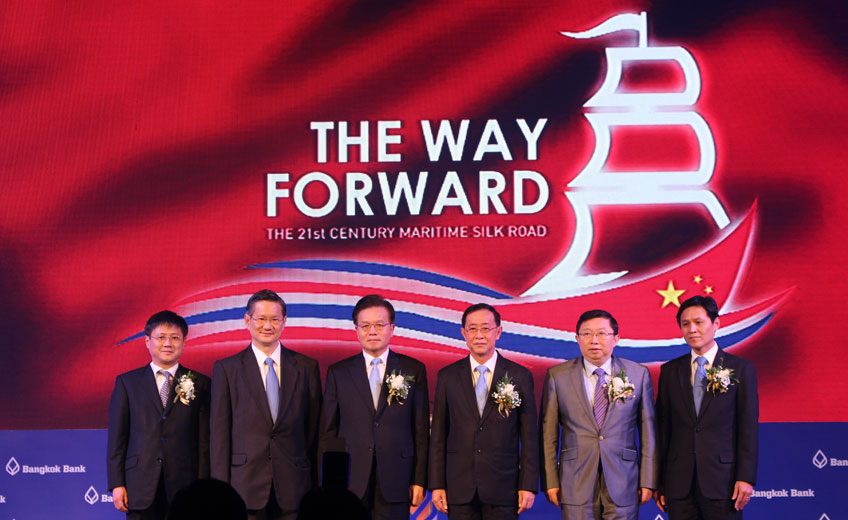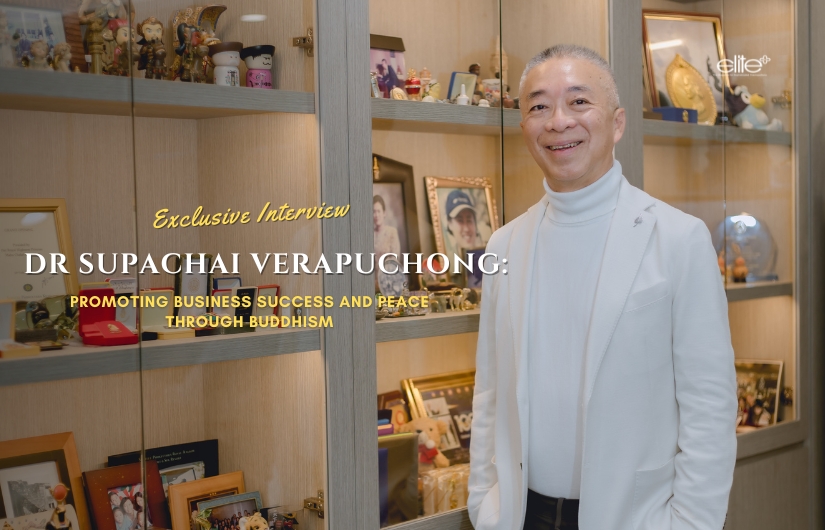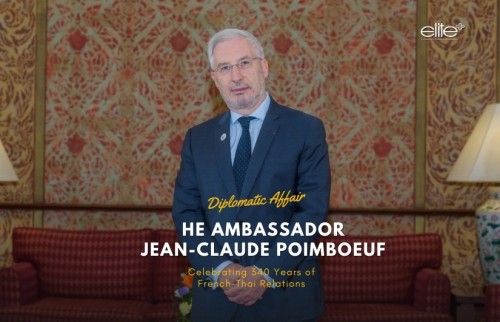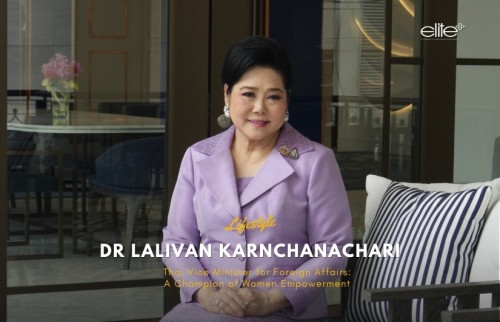The Silk Road began during the Han Dynasty, when an imperial envoy named Zhang Qian led an expedition to explore the outside world. Setting off at Xi’an and stretching westward, the journey played a significant role in connecting East and West. Merchants, pilgrims and nomads who later used the route furthered trade and civilization.
Two thousand years later, the dormant legend of the Silk Road was reawakened by Chinese president Xi Jinping in 2013. The Silk Road of the 21st century, also known as the “One Belt One Road” project, aims to revive diplomatic and financial relations in the region.
The mega-project, facilitated by high-speed railways, is expected to bring about a new era of connectivity. The revived Silk Road will be separated into two routes, with the ASEAN region serving as a major link for the maritime route.
Bangkok Bank PCL, seeing the economic potential of Sino-ASEAN cooperation, organized “The Way Forward, the 21st Century Maritime Silk Road”, a seminar in late November for customers and investors to learn more about the changes. Diplomats, academics and Thai entrepreneurs with experience of doing business with China were invited to share their thoughts.

China’s ambassador to Thailand, HE Ning Fukui, delivered an update on the progress of the new Silk Road. “A Chinese proverb states that no matter how big a tree is, a single tree cannot become a forest,” the ambassador said. “Adapted to the development model of a country, it implies that domestic growth cannot reach the highest level without international cooperation.
“We believe that the incentives proposed for the One Belt One Road campaign will lead to significant changes and strengthen diplomatic ties between China and its partners. China and Thailand play a significant role in the region’s economy. Our relationship is one of the closest diplomatically, ties which should be converted into concrete cooperation that benefits people in both countries.”
Cooperation for the maritime Silk Road is one of the strategies to increase economic growth in China’s “new normal”. The Chinese ambassador assured that after infrastructure construction is complete, bilateral cooperation in various sectors will continue. Thailand’s minister of transport, Arkhom Termpittayapaisith, agreed.
“Development of the special economic zones cannot succeed without infrastructure providing access to the production bases,” he said. “We do not see development only in terms of Thailand but have to look at opportunities in ASEAN and the global community. Our region connects the Pacific Ocean and Andaman Sea. In the past 20 years, Thailand and other countries in the Mekong sub-region have begun collaborating to construct new infrastructural systems, but we can progress further with support from China.”
Despite delays caused by the instability of Thai politics over the past two years, Mr Arkhom assured that the Sino-Thai railway has been progressing. The partners have discussed research and delegated construction responsibilities. Chinese officials were sent to Thailand to survey the route, and the railway tracks, tunnels and stations were designed.
“The Sino-Thai agreement divides the railway route into four phases, Bangkok-Kaeng Khoi, Kaeng Khoi-Map Ta Phut, Kaeng Khoi-Nakhon Ratchasima and Nakhon Ratchasima-Nong Khai,” the minister explained.
“The first and third phase can proceed first since the other two consist of more than single tracks. The later routes require further discussion.”
In terms of construction responsibilities, highly technological tasks such as tunnel boring were assigned to China while Thailand is responsible for normal track construction. With greater experience in railway development, China will oversee construction to ensure that every stretch adheres to the same standards. To launch construction, an opening ceremony was held on December 19 at Chiang Rak Noi station, where the Railway Control and Administrative Centre will be located.
The Chinese ambassador added: “Despite the global economic downturn, many countries have shown an interest in China’s economy, particularly the One Belt One Road policy. China’s economy is the second biggest in the world and has the highest volume of imports and exports, worth US$4 trillion. However, the economy is being restructured. Chinese manufacturers are restricted from draining natural resources and are becoming more environmentally friendly. China is losing its business advantages but it should be gratifying to see that even under these conditions the country’s economic growth is reaching 6.9%.”
As for opportunities for Thai investors, agriculture is a matter of concern in China. New technologies and greater food production are needed to serve the growing numbers of Chinese urbanites. The ambassador believes that Thailand’s ability to produce agricultural products is still widely accepted by foreign investors. In addition, according to the recent National Congress of the Communist Party, China is implementing a new policy to reduce agricultural areas in the next five years in order to let polluted lands recover from industrial toxins. This will cause domestic supply to decrease while demand for agricultural products will increase, providing an opportunity for Thailand.
“Sino-Thai cooperation will be mutually beneficial. We are most concerned with the moral aspect; China will not be the soloist of the symphony orchestra. The symphony of Sino-Thai development will be played together, and cooperation on the railway will be the most significant verse of the song.”

























































































































































































































































































































































































































































































































































































































































































































































































































































































































